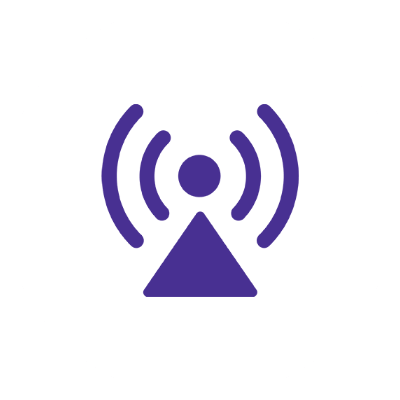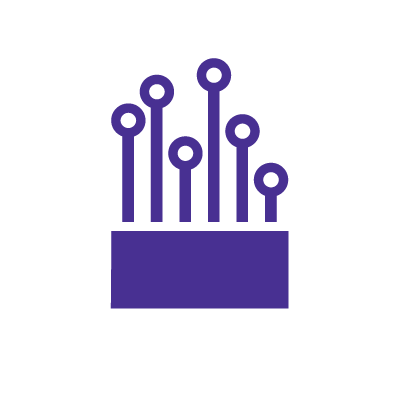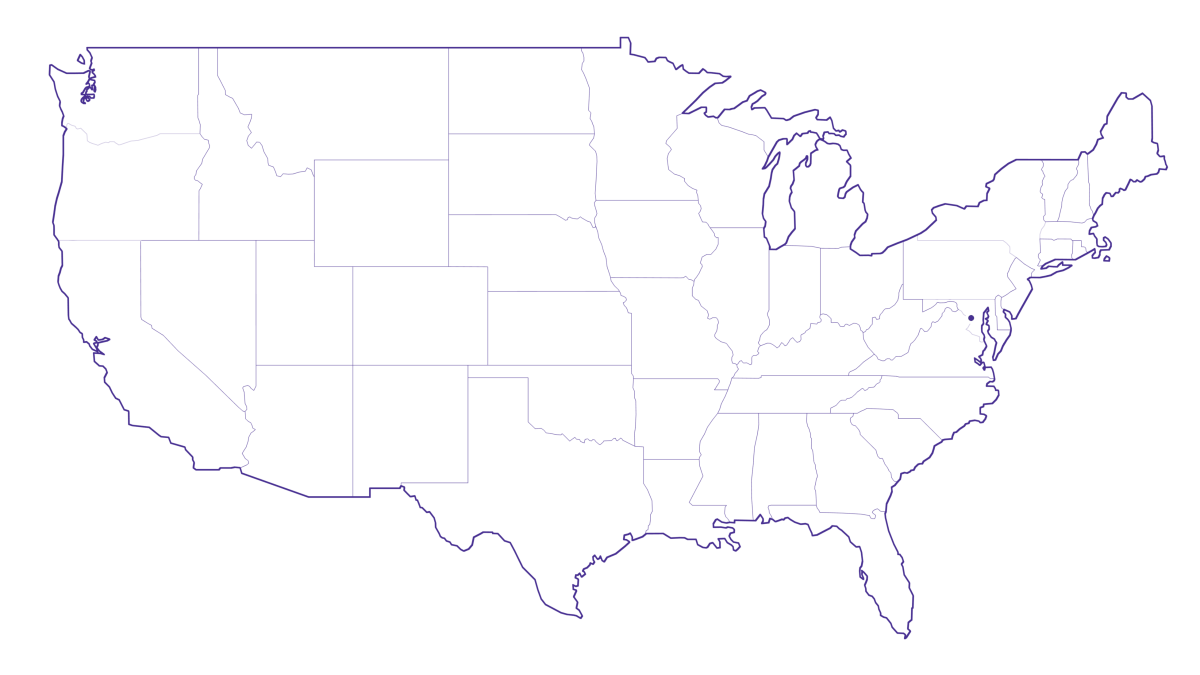Why Fiber internet is (probably) better than 5G for your home

In the last three years, 5G home internet has grown as an option for consumers. In fact, by 2030, global 5G is expected to make up 21% of the entire internet technology market share. However, the technology is still developing.
Today, fiber internet still provides faster, more consistent and more reliable internet speeds, as well as unlimited bandwidth and flexible internet plans. The research is clear: 43% of U.S. households choose fiber-powered internet solutions to stay connected.
In this article, we will clarify the differences between fiber and 5G internet and we’ll explore why fiber is a great fit for all your home internet needs.
What you'll learn:
- When is Fiber internet better than 5G?
- 5G vs. Fiber: What’s the difference?
- Fiber Internet vs. 5G home internet comparison
- What is the difference in cost between 5G and fiber internet?
- What is the coverage like for 5G vs. fiber internet?
- Is fiber internet more reliable than 5G?
- How does the speed of 5G compare to fiber internet?
- The best of both worlds: Bundling with Astound Mobile
- Looking for more topics?
The technology gap
You deserve better internet
5G Home Internet Fixed Wireless Access uses radio waves which are impacted by obstacles like buildings and trees, resulting in reduced reliability.

When is Fiber internet better than 5G?
In most cases, fiber is a better solution than 5G home internet. Not only does fiber possess the most developed internet infrastructure, but it also provides faster speeds and lower latency than 5G.
Fiber is perfect for data-intensive activities including:
- Streaming high-res videos.
- Online gaming.
- File transfers.
- Video conferencing.
- Cloud applications.
Additionally, if a household has multiple users and devices accessing the internet simultaneously, fiber’s coverage, flexibility and bandwidth can handle increased demands without interruptions.
Ask the Expert video tutorial: What advantages does a wired internet connection have over 5G?
5G vs. Fiber: What's the difference?
5G is the fifth generation of wireless technology. Wireless internet signals are transmitted in radio waves—in a range of high, medium, or low frequencies—through cell stations across specific areas.
5G wireless technology aims to provide users with fast speeds, low latency and increased reliability. However, the technology is still developing. 5G largely depends on consumer adoption in rural or residential areas for service providers to create infrastructure.
Fiber internet, on the other hand, transmits and receives data faster and over greater distances—without disturbance. Fiber networks use insulated fiber‑optic cables to send pulses of data at the speed of light.
An Optical Network Terminal converts the pulses into electrical signals like Ethernet. Fiber networks are all around us, and have been researched and developed extensively since the 1970s.
In other words, it’s a technology that has stood the test of time, and is designed to be flexible enough to accommodate new developments in networking, internet and communications.
Fiber-powered internet
Why Fiber Internet works better
Astound’s fiber-powered internet provides consistent speeds throughout the day versus 5G Home Internet which is prone to intermittency.

Fiber Internet vs. 5G home internet comparison
The differences between 5G home internet and fiber-powered internet aren’t only about how they send and receive data. Let’s take a closer look at some of the key differences.
What is the difference in cost between 5G and fiber internet?
Fiber is more expensive for ISPs to install, but less costly for customers.
Since fiber can achieve higher speeds and support many devices without new infrastructure, it’s more cost-effective for customers in the long term.
Fiber-powered internet can range between $25 and $250 per month, depending on your ISP.
With Astound, fiber-powered internet prices start at $25. When bundled with mobile and TV services, prices start at $75. Most ISPs give discounts when bundling together mobile and TV services with your fiber-powered internet plans.
To get started with fiber-powered internet, do the following:
- Choose your speed. Speeds range from 100 Mbps to 1.5 Gbps.
- Add on a mobile plan. Access our 5G wireless network for internet on-the-go.
- Add a TV plan for your household. Find your favorite channels and shows, all supported by our fiber-powered internet network.
You’ll be harnessing our speeds to download and upload files, stream your favorite shows, or game online.
Compared to a cable or fiber ISP, 5G technology is less expensive to distribute. However, it provides individual users with less value for the money.
Moreover, 5G internet is not uniform in speed, meaning that obstacles, coverage, distance from towers or transmitters and other factors influence your actual experience of internet speed in the home.
The major networks providing 5G internet offer prices ranging from $25 to $70, which may include discounts depending on the carrier. However, it’s important to note that some providers include data caps in their plans. After using a predetermined amount of GB, your ISP will deprioritize your connection, meaning your speeds will be much slower.
Ask the Expert video tutorial: Does 5G home internet have data caps?
Ask the Expert video tutorial: What is the experience using 5G home internet while streaming video or live TV?
If you think you’ll be streaming, gaming, or working from home and need a stable connection, a fiber-powered connection delivers consistent speed.
Because 5G speeds are not consistent, providers may not be delivering you internet at the speed tier that you are paying for. For example, some users of 5G home internet report that their internet connection switches from 5G to 4G, with little explanation from the provider.
In some extreme cases, users have reported that being as little as 200 feet away from a 5G tower does not help 5G home internet performance issues.
5G home internet is a connection that is shared by many users at once—inside and outside the home. During peak usage times, your connection may be deprioritized.
If your home supports heavy data use, multiple users, or several connected devices, your service may not function properly with 5G.
Network & Coverage
Astound's got you covered
Our mobile service runs on a nationwide network with 5G service in all 50 states giving you reliable nationwide coverage you can count on.

What is the coverage like for 5G vs. fiber internet?
5G home internet is still in its early stages. Coverage isn’t available yet everywhere. As of now, 5G uses radio waves to transmit data through radio transmitters and small cell stations placed within major urban areas with high populations.
When transmitting a high-bandwidth or millimeter wave (mmWave) spectrum, the range of a 5G small cell is 50 to 2,000 feet (15 to 600 meters), assuming there are no obstacles like trees, tall buildings or mountains. If you happen to live near a 5G tower, you may experience fast download and upload rates.
Conversely, if you move away from the 5G tower, your internet speeds will fluctuate, impacting your internet’s overall performance. This same phenomenon occurs when you move your cell phone away from a 5G hub and your network slows to a halt.
Because fiber internet has been around longer, it’s already easily available in many regions. Due to its high speeds and minimal latency, fiber is the default option for many internet users.
More consumers are now looking toward fiber-to-the-home (FTTH) solutions. These connections are ideal, as the fiber-optic cables run directly from the ISP’s hub to your home, ensuring the best speeds and reliability for your home network.
Ask the Expert video tutorial: How reliable is a 5G home connection?
Is fiber internet more reliable than 5G?
Fiber provides robust and consistent internet connectivity. It’s transmitted by light signals and electromagnetic interference rarely affects fiber cables – unlike other technologies. For example, fiber connections send data over long distances with minimal loss of signal strength.
Compared to 5G, fiber has the lowest latency at around 1ms. These faster data transmission response times make fiber the most reliable internet for high-precision applications.
As 5G home internet uses radio frequencies, the distances the signals can travel is limited. Buildings, trees and other objects block signals. The further you are from the radio towers, the weaker your internet signal will be.
5G’s latency is around 4 ms. When using online applications that demand real-time interactions, high latency makes activities like video conferencing, online gaming, or virtual reality applications less responsive and less reliable.
Switch & save
Astound is the #1 cable ISP
Stream live content, work, surf, game and connect to multiple devices with speeds up to 1500* Mbps through our ultra‑reliable fiber‑powered network.*

How does the speed of 5G compare to fiber internet?
Fiber-powered internet enables high-speed rates. Because of fiber’s history, ISPs can deliver more consistent speeds. Consumers can choose from multiple speed tiers, ranging from lower to higher speeds, based on their needs, demands and plans.
5G home internet, however, provides a range of speeds. Home 5G internet providers cannot deliver consistent speeds the way fiber optic internet providers can. 5G home internet availability and actual speeds may vary depending on factors such as location, network architecture and service plans.
Fiber internet and 5G can both deliver speed. But, with fiber, you’ll know the internet speed you’re paying for is the internet speed you’re receiving in your home as long as you have up-to-date equipment, including your modem and router, capable of receiving the highest speeds.
The best of both worlds: Bundling with Astound Mobile
With Astound Mobile offers fiber-powered internet speeds from 100 Mbps to 1.5 Gbps, you and your friends can can browse, stream and game across multiple devices on your home network. And, while you’re on the go, stay connected with our mobile plans.
Read more about our internet and mobile plans.
*Internet speeds may vary & are not guaranteed. Certain equipment may be required to reach advertised speeds. DOCSIS 3.1 modem with 2.5GE physical LAN port is required for 1 Gigabit speeds and higher. See astound.com/yourspeed for why speeds may vary. To view Astound’s FCC Network Management Disclosure see astound.com/policies-disclaimers. Limited time offer, subject to change without notice. Advertised promotional price valid for duration of the stated promotional period from time of service activation. Regular rates apply after promotional period ends. Equipment not included and is extra. Modem required for Internet service. Enhanced Wi-Fi or Whole Home Wi-Fi (eero) not included and is add’l. Offer includes a monthly discount for enrollment in both automatic payments (autopay) & paperless billing (e-bill). Discount of $10 applies with automated bank account deduction or a discount of $5 applies with automated credit/debit card payment. Valid email address required. Must complete enrollment in autopay and e-bill within 30-days of placing the order. Without enrollment, the discount does not apply. Discount appears on bill within 3 bill cycles after enrolling. If either autopay or e-bill is canceled, services are changed, or the account is not in good standing, then the monthly discount will be discontinued. Offer valid only for new residential Astound customers or previous customers with an account in good standing who have not had Astound service within the last 60 days. Any add’l services, equipment, premium channels & other tiers of service are subject to an add’l charge & regular increases. A one-time activation fee of $14.99 (in addition to any installation fees) will be charged & is subject to change. Add’l fees apply for taxes & surcharges, and are subject to change. WA RESIDENTS: unless otherwise specified, price does not include a 2% Regulatory Administration Fee. For details about taxes, fees & surcharges visit astound.com/fees. No early termination fees apply in the event service is terminated in advance of the promotional end date. Customer is responsible for any accrued service charges in the event service is canceled. Subject to credit check. Not all services & speeds are available in all areas. A multi-product discount may be available to qualifying addresses with a subscription to mobile, TV, and 600 Mbps Internet or higher. Discounts will be reflected in your order cart at time of purchase, if available. Other restrictions may apply. All services are governed by the Astound Customer Terms & Conditions that can be found at astound.com/policies-disclaimers. © 2025 Radiate HoldCo, LLC d/b/a Astound Broadband. All rights reserved.
While we have made every attempt to ensure that the information contained in this site has been obtained from reliable sources, Astound is not responsible for any errors or omissions, or for the results obtained from the use of this information. All information in this site is provided “as is”, with no guarantee of completeness, accuracy, timeliness and without warranty of any kind, express or implied, including, but not limited to warranties of performance, merchantability and fitness for a particular purpose. Certain links in this site connect to other websites maintained by third parties over whom Astound has no control. Astound makes no representations as to the accuracy or any other aspect of information contained in other websites.
eero Plus is available for an additional $9.99/month and requires subscription to whole home WiFi powered by eero.


















